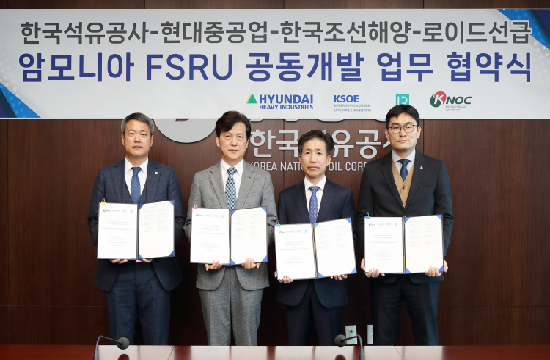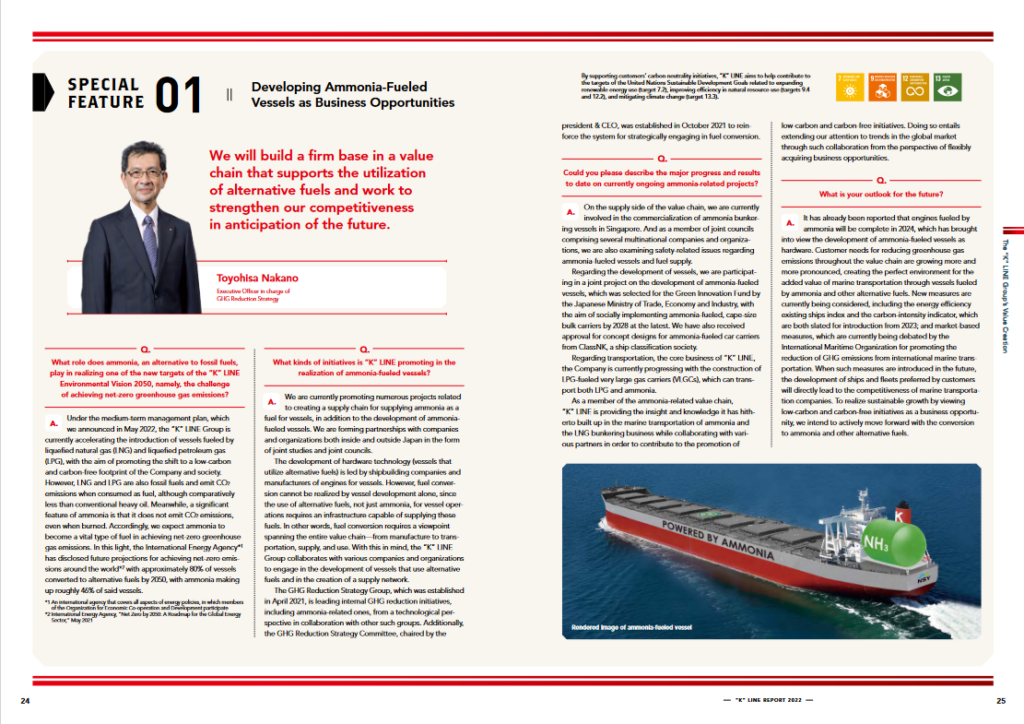Maritime ammonia developments in South Korea, Japan
By Julian Atchison on December 19, 2022
Hyundai Heavy Industries to develop ammonia FSRU vessel
HHI, Lloyd’s Register and Korea National Oil Corporation (KNOC) have signed a new agreement to jointly develop an ammonia floating storage and regasification unit, or FSRU (Korean language). The FSRU vessel acts as an intermediary:
that stores liquefied ammonia transported from the production area, regasifies it, and supplies it to customers on land. FSRUs are generally operated in a similar way to land terminals by berthing at coastal mooring facilities, and if necessary, direct sea transportation of cargo is also possible.
FSRU vessel function, as explained in HHI’s official press release, 8 Dec 2022 (translated using Google)

The press release also notes that demand for ammonia fuel for coal-fired power plants is increasing. This year we have seen the first coal (and gas) co-firing initiatives announced in Korea, with projects led by SK, Plug Power, Doosan, KEPCO and Samsung. This is also not the first ammonia FSRU announcement we’ve seen this year, with a similar project underway in Japan (Mitsubishi and Mitsui).
Korean, Japanese shipping giants focus on ammonia fuel
Korea-based shipping line KSS Line and Samsung C&T’s trading arm will cooperate to secure ammonia-powered vessels, ammonia fuel, transportation and bunkering infrastructure. Together, the pair seek to establish a clean hydrogen/ammonia transportation service powered by alternative fuels.

In Japan, K Line has announced ammonia and LNG will underpin its decarbonisation strategy towards 2050. As indicated in its annual report for 2022, K Line will invest around $227 million to increase the number of vessels running on LNG, LPG, ammonia and other alternative fuels. Similar to its Korean counterpart, K Line will focus on a full value chain approach to secure fuel supply:
The development of hardware technology (vessels that utilize alternative fuels) is led by shipbuilding companies and manufacturers of engines for vessels. However, fuel conversion cannot be realized by vessel development alone, since the use of alternative fuels, not just ammonia, for vessel operations requires an infrastructure capable of supplying these fuels. In other words, fuel conversion requires a viewpoint spanning the entire value chain—from manufacture to transportation, supply, and use. With this in mind, the “K” LINE Group collaborates with various companies and organizations to engage in the development of vessels that use alternative fuels and in the creation of a supply network.
K Line Executive Officer in charge of GHG Reduction Strategy Toyohisa Nakano in “K” Line Report 2022 (Nov 2022)
K Line, ITOCHU, Nihon Shipyard and Mitsui have also been granted Approval in Principal for a ammonia-fueled, 200,000 dwt Newcastlemax bulk carrier design. Classification society ClassNK has included the designation “Alternative Design Approval” in its decision, meaning that – in lieu of any current international guidelines for the use of ammonia as a maritime fuel – the new vessel will be able to run on ammonia fuel once built, subject to approval in accordance with the SOLAS Convention (Safety of Life at Sea).
CCU ammonia shipment arrives in Ulsan from Middle East
Produced at SABIC’s al-Jubail ammonia plant in Saudi Arabia, the first of two 25,000 tonne, CCU ammonia shipments arrived in Ulsan in late November. Emissions from steam methane reforming were captured and utilised at Aramco’s neighboring oil refinery in al-Jubail. No details about capture rate or carbon intensity are provided, but the clean ammonia product shipped to Korea was certified as “blue” ammonia by German certification entity TÜV Rheinland.
Korea-based Lotte Fine Chemical purchased the ammonia from SABIC for use in its own operations, and is seeking to become a major importer of ammonia fuel. In early November, Lotte announced it was leading a consortium of Korean organisations to build a clean ammonia supply chain in the West Sea (Yellow Sea).